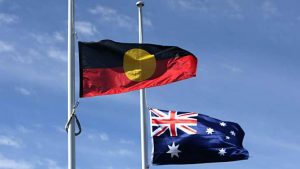Home » Commentary » Opinion » Reject division
Jacinta Nampijinpa Price , Simon Cowan
· IDEAS@THECENTRE
 Last week the Prime Minister delivered the latest (not) Closing the Gap report, which again shows how little progress has been made in the 12 years since the “Gap” targets and process started.
Last week the Prime Minister delivered the latest (not) Closing the Gap report, which again shows how little progress has been made in the 12 years since the “Gap” targets and process started.
In many areas, although progress has actually been made in absolute terms, Indigenous outcomes have merely kept pace with improvements in non-Indigenous society.
It was interesting that the Closing the Gap report was delivered the same week the High Court took the rather radical step of recognising (or more accurately creating) a new category of person: an Indigenous non-citizen non-alien, who it seems has an undefined right to remain in Australia notwithstanding the operation of the Migration Act.
This shows the clear divisions at the heart of Indigenous policy in Australia.
The aim of Closing the Gap is to create unity between Indigenous and non-Indigenous peoples. However it’s hard to think of an action more likely to be divisive than creating a vague legal entitlement enjoyed exclusively by a subset of people with Indigenous heritage, which operates completely outside our system of government.
There are a number of practical problems with this.
First, it is surprising that so soon after Indigenous activists were up in arms about the appropriateness of government inquiring into whether a person is or is not Indigenous, so many would be cheering a decision that has at its heart the need to prove indigeneity to government.
It has other problems as well, however this did not stop the court determining that, as if by osmosis, a person who claims to be Aboriginal or has a single Aboriginal ancestor somewhere in the family tree has a deep spiritual connection to Australia as a land mass.
Clearly, the approach that has governed Indigenous affairs for a number of years, focusing on symbolic gestures and separatist thinking behind the Voice to Parliament and this recent High Court judgment, is not working.
These decisions and policies are supposedly aimed at upholding the rights of Indigenous Australians and improving their lives.
So far all that has transpired is a struggle for power within Indigenous communities, further complications, and further division of the nation along racial lines.
As can be seen in the Closing the Gap statement, it has not translated to positive outcomes for marginalised Aboriginal Australians in remote communities. There has been no shortage of money, but there is no evidence that this money has been spent effectively.
This is an edited extract of an opinion piece published in the Canberra Times as Closing the gap requires us to reject separatism
Reject division